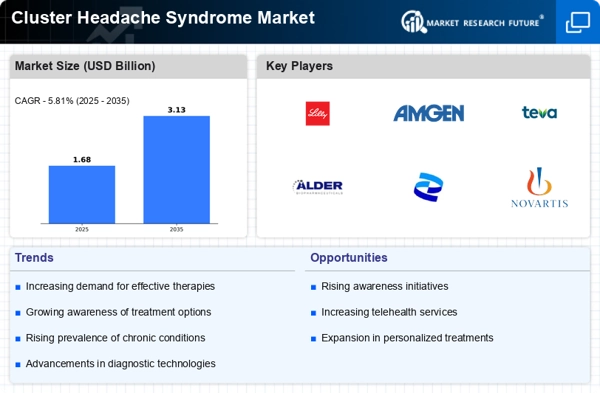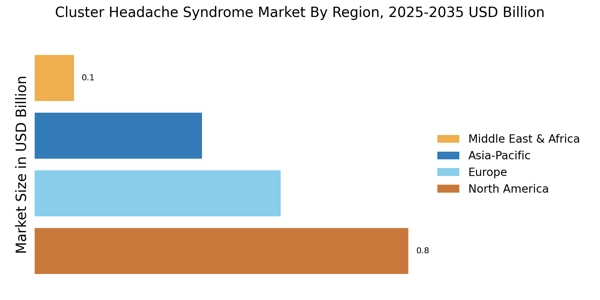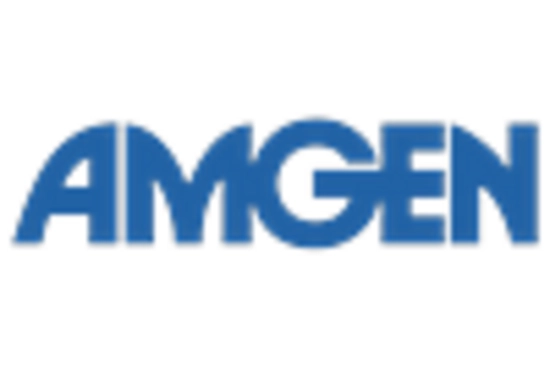Innovative Therapeutic Developments
The Cluster Headache Syndrome Market is witnessing a surge in innovative therapeutic developments, which serve as a crucial market driver. Recent advancements in pharmacological treatments, including the introduction of novel medications and devices, have shown promise in alleviating the severity and frequency of cluster headaches. For instance, the approval of new injectable medications and neuromodulation devices has expanded the therapeutic landscape, offering patients more options for effective management. This innovation not only enhances patient outcomes but also stimulates market growth as healthcare providers adopt these new therapies. The ongoing research and development efforts aimed at understanding the underlying mechanisms of cluster headaches further indicate a potential for breakthrough treatments in the near future.
Increased Patient Advocacy and Support Groups
The emergence of patient advocacy and support groups plays a pivotal role in the Cluster Headache Syndrome Market. These organizations work tirelessly to raise awareness about the condition, educate patients and healthcare providers, and promote research initiatives. By fostering a community of support, they empower individuals affected by cluster headaches to seek appropriate medical care and participate in clinical trials. This heightened awareness and advocacy can lead to increased demand for treatments and therapies, thereby driving market growth. Furthermore, the collaboration between advocacy groups and pharmaceutical companies may facilitate the development of patient-centered solutions, ensuring that the needs of those suffering from cluster headaches are adequately addressed.
Rising Incidence of Cluster Headache Syndrome
The increasing prevalence of Cluster Headache Syndrome Market is a notable driver in the Cluster Headache Syndrome Market. Recent studies indicate that approximately 0.1% to 0.4% of the population is affected by this debilitating condition, with a higher incidence observed in males. This rising incidence necessitates enhanced treatment options and management strategies, thereby propelling market growth. As awareness of the syndrome expands, more individuals are likely to seek medical attention, further driving demand for effective therapies. The growing recognition of the condition among healthcare professionals also contributes to the market's expansion, as it encourages the development of innovative treatment modalities tailored to the needs of patients suffering from this syndrome.
Growing Investment in Research and Development
Investment in research and development within the Cluster Headache Syndrome Market is a significant driver of market growth. Pharmaceutical companies and research institutions are increasingly allocating resources to explore the pathophysiology of cluster headaches and to develop targeted therapies. This trend is evidenced by the rising number of clinical trials focused on novel treatment approaches, which have increased by over 30% in recent years. Such investments not only foster innovation but also enhance the understanding of the syndrome, potentially leading to more effective treatment options. As the market continues to evolve, the emphasis on R&D is likely to attract further funding and collaboration, thereby accelerating advancements in the management of cluster headaches.
Integration of Telemedicine in Treatment Approaches
The integration of telemedicine into treatment approaches represents a transformative driver in the Cluster Headache Syndrome Market. As healthcare systems increasingly adopt telehealth solutions, patients gain improved access to specialists and timely interventions. This is particularly beneficial for individuals living in remote areas or those who face challenges in accessing traditional healthcare services. Telemedicine not only enhances patient engagement but also allows for continuous monitoring and management of cluster headaches. The convenience and efficiency of virtual consultations may lead to increased patient satisfaction and adherence to treatment plans. Consequently, the growing acceptance of telemedicine is likely to contribute to the expansion of the market, as it aligns with the evolving landscape of healthcare delivery.


















Leave a Comment